
Horse breeding is reproduction in horses, and particularly the human-directed process of selective breeding of animals, particularly purebred horses of a given breed. Planned matings can be used to produce specifically desired characteristics in domesticated horses. Furthermore, modern breeding management and technologies can increase the rate of conception, a healthy pregnancy, and successful foaling.
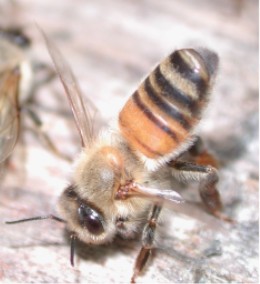
A pheromone is a secreted or excreted chemical factor that triggers a social response in members of the same species. Pheromones are chemicals capable of acting like hormones outside the body of the secreting individual, to affect the behavior of the receiving individuals. There are alarm pheromones, food trail pheromones, sex pheromones, and many others that affect behavior or physiology. Pheromones are used by many organisms, from basic unicellular prokaryotes to complex multicellular eukaryotes. Their use among insects has been particularly well documented. In addition, some vertebrates, plants and ciliates communicate by using pheromones. The ecological functions and evolution of pheromones are a major topic of research in the field of chemical ecology.

Ovulation is the release of eggs from the ovaries. In women, this event occurs when the ovarian follicles rupture and release the secondary oocyte ovarian cells. After ovulation, during the luteal phase, the egg will be available to be fertilized by sperm. In addition, the uterine lining (endometrium) is thickened to be able to receive a fertilized egg. If no conception occurs, the uterine lining as well as the egg will be shed during menstruation.

Cranes are a type of large bird with long legs and necks in the Gruidae family of the group Gruiformes. The family has 15 species placed in four genera which are Antigone, Balearica, Leucogeranus, and Grus. They are large birds with long necks and legs, a tapering form, and long secondary feathers on the wing that project over the tail. Most species have muted gray or white plumages, marked with black, and red bare patches on the face, but the crowned cranes of the genus Balearica have vibrantly-coloured wings and golden "crowns" of feathers. Cranes fly with their necks extended outwards instead of bent into an S-shape and their long legs outstretched.
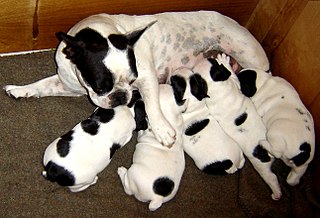
Dog breeding is the practice of mating selected dogs with the intention of maintaining or producing specific qualities and characteristics. When dogs reproduce without such human intervention, their offspring's characteristics are determined by natural selection, while "dog breeding" refers specifically to the artificial selection of dogs, in which dogs are intentionally bred by their owners. Breeding relies on the science of genetics, hence a breeder who is knowledgeable on canine genetics, health, and the intended purpose of the dogs attempts to breed suitable dogs.
Concealed ovulation or hidden estrus in a species is the lack of any perceptible change in an adult female when she is fertile and near ovulation. Some examples of perceptible changes are swelling and redness of the genitalia in baboons and bonobos, and pheromone release in the feline family. In contrast, the females of humans and a few other species that undergo hidden estrus have few external signs of fecundity, making it difficult for a mate to consciously deduce, by means of external signs only, whether or not a female is near ovulation.
In mammalian species, pseudopregnancy is a physical state whereby all the signs and symptoms of pregnancy are exhibited, with the exception of the presence of a fetus, creating a false pregnancy. The corpus luteum is responsible for the development of maternal behavior and lactation, which are mediated by the continued production of progesterone by the corpus luteum through some or all of pregnancy. In most species, the corpus luteum is degraded in the absence of a pregnancy. However, in some species, the corpus luteum may persist in the absence of pregnancy and cause "pseudopregnancy", in which the female will exhibit clinical signs of pregnancy.
The estrous cycle is a set of recurring physiological changes induced by reproductive hormones in females of mammalian subclass Theria. Estrous cycles start after sexual maturity in females and are interrupted by anestrous phases, otherwise known as "rest" phases, or by pregnancies. Typically, estrous cycles repeat until death. These cycles are widely variable in duration and frequency depending on the species. Some animals may display bloody vaginal discharge, often mistaken for menstruation. Many mammals used in commercial agriculture, such as cattle and sheep, may have their estrous cycles artificially controlled with hormonal medications for optimum productivity. The male equivalent, seen primarily in ruminants, is called rut.
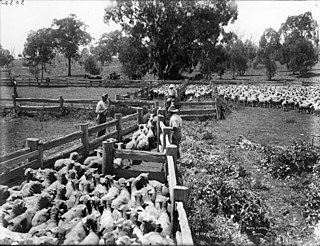
Culling is the process of segregating organisms from a group according to desired or undesired characteristics. In animal breeding, it is removing or segregating animals from a breeding stock based on a specific trait. This is done to exaggerate desirable characteristics, or to remove undesirable characteristics by altering the genetic makeup of the population. For livestock and wildlife, culling often refers to killing removed animals based on their characteristics, such as their sex or species membership, or as a means of preventing infectious disease transmission.
Cooperative breeding is a social system characterized by alloparental care: offspring receive care not only from their parents, but also from additional group members, often called helpers. Cooperative breeding encompasses a wide variety of group structures, from a breeding pair with helpers that are offspring from a previous season, to groups with multiple breeding males and females (polygynandry) and helpers that are the adult offspring of some but not all of the breeders in the group, to groups in which helpers sometimes achieve co-breeding status by producing their own offspring as part of the group's brood. Cooperative breeding occurs across taxonomic groups including birds, mammals, fish, and insects.
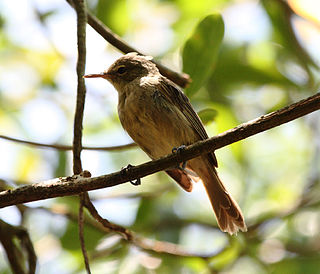
The Seychelles warbler, also known as Seychelles brush warbler, is a small songbird found on five granitic and corraline islands in the Seychelles. It is a greenish-brown bird with long legs and a long slender bill. It is primarily found in forested areas on the islands. The Seychelles warbler is a rarity in that it exhibits cooperative breeding, or alloparenting, which means that the monogamous pair is assisted by nonbreeding female helpers.

The greater short-nosed fruit bat, or short-nosed Indian fruit bat, is a species of megabat in the family Pteropodidae found in South and Southeast Asia.
Seasonal breeders are animal species that successfully mate only during certain times of the year. These times of year allow for the optimization of survival of young due to factors such as ambient temperature, food and water availability, and changes in the predation behaviors of other species. Related sexual interest and behaviors are expressed and accepted only during this period. Female seasonal breeders will have one or more estrus cycles only when she is "in season" or fertile and receptive to mating. At other times of the year, they will be anestrus, or have a dearth of their sexual cycle. Unlike reproductive cyclicity, seasonality is described in both males and females. Male seasonal breeders may exhibit changes in testosterone levels, testes weight, and fertility depending on the time of year.
Flexible or opportunistic breeders mate whenever the conditions of their environment become favorable. Their ability and motivation to mate are primarily independent of day-length (photoperiod) and instead rely on cues from short-term changes in local conditions like rainfall, food abundance and temperature. Another factor is the presence of suitable breeding sites, which may only form with heavy rain or other environmental changes.

Plant breeding is the science of changing the traits of plants in order to produce desired characteristics. It has been used to improve the quality of nutrition in products for humans and animals. The goals of plant breeding are to produce crop varieties that boast unique and superior traits for a variety of applications. The most frequently addressed agricultural traits are those related to biotic and abiotic stress tolerance, grain or biomass yield, end-use quality characteristics such as taste or the concentrations of specific biological molecules and ease of processing.
Menstruation is the shedding of the uterine lining (endometrium). It occurs on a regular basis in uninseminated sexually reproductive-age females of certain mammal species.
The challenge hypothesis outlines the dynamic relationship between testosterone and aggression in mating contexts. It proposes that testosterone promotes aggression when it would be beneficial for reproduction, such as mate guarding, or strategies designed to prevent the encroachment of intrasexual rivals. The positive correlation between reproductive aggression and testosterone levels is seen to be strongest during times of social instability. The challenge hypothesis predicts that seasonal patterns in testosterone levels are a function of mating system, paternal care, and male-male aggression in seasonal breeders.
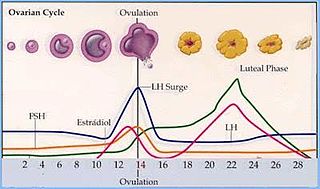
Induced ovulation is when a female animal ovulates due to an externally-derived stimulus during, or just prior to, mating, rather than ovulating cyclically or spontaneously. Stimuli causing induced ovulation include the physical act of coitus or mechanical stimulation simulating this, sperm and pheromones.
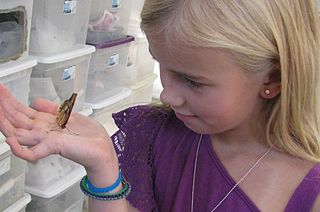
Commercial butterfly breeding or captive butterfly breeding is the practice of breeding butterflies and moths in controlled environments to supply the stock to research facilities, universities, zoos, insectariums, elementary and secondary schools, butterfly exhibits, conservation organizations, nature centers, individuals, and other commercial facilities. Some butterfly and moth breeders limit their market to wholesale customers while other breeders supply smaller volumes of stock as a retail activity. Some small scale and larger scale breeders limit their businesses to the provision of butterflies or moths for schools. Others provide butterflies to be used and released in commemorative events. The release usually occurs in the natural range of the butterfly.

Altitudinal migration is a short-distance animal migration from lower altitudes to higher altitudes and back. Altitudinal migrants change their elevation with the seasons making this form of animal migration seasonal. Altitudinal migration can be most commonly observed in species inhabiting temperate or tropical ecosystems. This behavior is commonly seen among avian species but can also be observed within other vertebrates and some invertebrates. It is commonly thought to happen in response to climate and food availability changes as well as increasingly due to anthropogenic influence. These migrations can occur both during reproductive and non-reproductive seasons.










